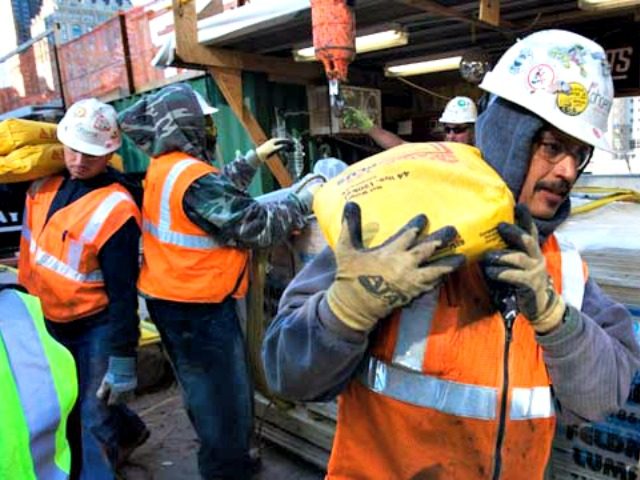The myth of “jobs Americans won’t do” is once again on the rise.
And just like the last time you heard about this alleged economic malaise, it is nonsense.
The most recent peddlers of the labor shortage bunk are homebuilders. They say that they could be building many more homes if only they could find the workers to build them. The shortage of workers is creating a shortage of homes, driving up prices and putting homeownership out of reach for more Americans, they claim.
Here’s a sample from CNBC on Thursday:
Thousands of construction workers left the industry during the recession, many of them heading to the energy sector. The assumption was that they would return when energy lagged and homebuilding recovered. They did not. The labor shortage in building actually worsened in 2016 — a surprise to most analysts.
“We thought we’d see a flow back of workers from the energy sector,” said Rob Dietz, chief economist with the National Association of Home Builders. “The labor shortage has basically grown and accelerated. It’s the top challenge in the building industry right now.”
Dietz points to both an immigration and a generational challenge. The workforce is aging, with the typical age of a construction worker now 42. More Americans are going to college now, and so they are less likely to pursue a career in construction. Simply put, young Americans don’t want to build houses anymore. That leaves the business to immigrant laborers.
“These jobs, Americans don’t want,” Myers said. “We have a hard-working Hispanic labor force here in Denver that really is the foundation for the construction industry.”
If there’s a massive job shortage in homebuilding, however, wages should be skyrocketing. That’s not happening.
The average hourly wage adjusted of nonsupervisory workers engaged in the construction of buildings was $25.65 in January 2017, according to the most recent data available from the Bureau of Labor Statistics. That’s an increase of just 7.18 percent over the inflation adjusted January 2007 average of $23.93. In other words, real wage increases in building construction have averaged around 0.72 percent per year over the past decade.
That increase is less than the 8.6 percent real wage gains of nonsupervisory private sector workers overall during the same period.
The fact that construction work wage gains lag behind those of the U.S. workforce is clear and decisive evidence that there is no labor shortage. These aren’t jobs that Americans won’t do–they are jobs that homebuilders aren’t willing to pay for.
With that in mind, let’s get back to CNBC’s report:
Labor is the top concern among the nation’s builders, according to an NAHB survey, and worry over its cost and availability is growing.
“Because the building industry is highly decentralized — there are 40,000 homebuilding companies in the country — you do see poaching. There are situations where you can recruit a worker, and they can work for you for a quarter or two, and then they’re working for another subcontractor down the road,” Dietz said.
Myers says he tries to build relationships with subcontractors. He has one-on-one meetings to build brand loyalty, but he admits, it often comes down to cold, hard cash.
Imagine that. In America’s capitalist economy, employers are complaining that workers leave to work for competitors because they just aren’t loyal enough. They make their decisions based on “cold, hard cash.”
The picture is even bleaker on a longer time horizon. Way back in 1961, the average hourly wage in construction was $3.48. Adjusted for inflation, that would be $28.35 today. Which means that we’re paying construction workers less today than we were 56 years ago.
So why are the homebuilders arguing there is a labor shortage? Because they want the U.S. to import more immigrants to hold down the price of hourly construction labor.
And they’re barely pretending otherwise. Here’s how CNBC puts it:
Immigrants make up about a quarter of the overall construction workforce, but that share is likely higher for residential homebuilding, partly due to a large number of undocumented workers. Builders say they make sure their contractors are legal to work, but they have less control over the subcontractors who often move from site to site. Even that group is shrinking, as President Donald Trump tries to impose travel bans and threatens to build a wall between the U.S. and Mexico.
“There is a fear to get out into the labor force, I think there is an uncertainty,” Myers said. “I had one of our trades who became a citizen last year ask me if that could be taken away from him. Even for the people who are legal and documented, it’s a factor that is holding back the labor force.”
Myers has it backward. What’s holding back the labor force isn’t a lack of workers. It’s the insistence of homebuilders that they be served a constant stream of cheap labor to keep their production costs down and profits up.

COMMENTS
Please let us know if you're having issues with commenting.